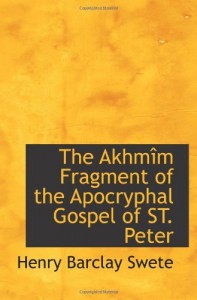[We have entered the Christian season of Lent, leading to its culminating Passion Week and 4 days of Easter. This article first posted in 2014 , reposting every year. It is part of the series MUST READ/MUST OWN resource, Rabbi Schmuley Boteach’s Kosher Jesus. Please refer to earlier posts from this same book.-
This ebook is downloadable from amazon.com if you wish to have your own copy. Reformatted and highlighted for this post; New Testament verses are coded red for caution.–Admin1]
——————————————-
Chapter 10: The Crucifixion
The story of Jesus’ crucifixion is one of the best-known stories in human history. Even the most casual New Testament reader is familiar with the general outline: Jesus was betrayed by his follower Judas, extended clemency by Pontius Pilate, but then denounced by the Pharisees and Jewish onlookers, after which he was nailed to a cross, dying on what would become to be known as Good Friday.
Yet, if we’ve learned anything about our study of Jesus’ life, it’s that there is often more to it than meets the eye. Embedded in the various Gospel versions of this well-worn story are a number of substantive contradictions that call into question the very fundamentals of its retelling. In these disagreements we get a clear view of the machinations of New Testament editors as they found it necessary to rewrite history.
The first three Gospels — Matthew, Mark, and Luke — all focus on Jesus’ victimhood at the hands of Jews and Romans. Yet in the Book of John, the story is reversed.
The last of the Gospels to be written, John tells an almost unrecognizably different story.
Jesus actually volunteers to lay down his life.
In complete control of the situation, Jesus says to the people, including Pontius Pilate, that the only reason the Romans can put him to death is because he himself wills it.
John even gives the impression that Jesus experiences no pain.
From the outset, he is a lamb that goes to the slaughter willingly and does not suffer.
This could not be more in conflict with the account given by Matthew, in which Jesus suffers terribly on the cross. He cries out, “My God, my God, why have you forsaken me?” These are words of unspeakable anguish and abandonment — certainly not words that would be spoken by someone willingly submitting to torture and death.
The other two Gospels portray the horror and misery of this event in unstinting detail. Mark describes a scene in which Jesus is mocked and brutalized by Roman soldiers:
“The soldiers led Jesus into the palace . . . They put a purple robe on him, then twisted together a crown of thorns and set it on him. And they began to call out to him, ‘Hail, king of the Jews!’ Again and again they struck him on the head with a staff and spit on him. Falling on their knees, they paid homage to him. And when they had mocked him, they took off the purple robe and put his own clothes on him. Then they led him out to crucify him.”
Luke paints a picture of Jesus crucified alongside two criminals, as onlookers taunted.
“The people stood watching, and the rulers even sneered at him. They said, ‘He saved others; let him save himself if he is God’s Messiah, the Chosen One.'”
The obvious question that arises is, simply, what changed ? How did the Gospels contort Jesus’ crucifixion from the pathos of Mark, Matthew, and Luke to the strange detachment described by John?
It seems clear that this was a rewriting calculated to appeal to Roman readers after Jesus’ death. The culture of Rome thrived on power and masculine virility. The Roman people would never have been impressed with a weak Jesus, as he was described in the first three Gospels. Though the idea of victimhood and martyrdom would have appealed to the Jews who were themselves victims of Roman brutality, the Romans could never relate to a deity that gets beaten up and crucified by centurions. They were the strongest people on earth! They revered aggression, not weakness. Any deity pathetic enough to be put to death by low-ranking Roman soldiers could not be a deity at all.
The editor of the Book of John, last of the Gospels, faces a quandary. He cannot change the facts. They have already been reported in historical accounts and other Gospels. Jesus had been crucified by the Romans — case closed. But since he must do something to rescue Jesus’ virility, he changes the mechanics and motivations of the story. The most important verse in all of John, so crucial that we shall devote later chapters to understanding its ramifications, should be familiar to all Christians:
“For God so loved the world that he gave his one and only Son, that whoever believes in him shall not perish but have eternal life.”
John envisages Jesus as an all-powerful deity who willingly laid down his life to atone for the sins of mankind. Hence, Jesus barely suffers throughout the Passion. It is all part of a divine plan.
This isn’t the only discrepancy that John introduces. Six hundred Roman soldiers come to arrest Jesus but end up bowing at his feet. Not only that, he receives a royal burial. Jesus even exhibits awareness of his predestined fate when he tells Pilate,
“You would have no power over me if it were not given to you, from above.”
How different this is from the other three Gospels.
The many significant discrepancies in the crucifixion story suggest alterations by multiple editors and authors. These disagreements include the fact that Mark has three women going to anoint the body of Jesus. Very early on the first day of the week, just after sunrise, they were on their way to the tomb and they asked each other,
“Who will roll the stone away from the entrance of the tomb?” But when they looked up, they saw that the stone, which was very large, had been rolled away.”
Yet Matthew says only two women went:
“After the Sabbath, at dawn on the first day of the week, Mary Magdalene and the other Mary went to look at the tomb.”
Note they were only going to see the tomb, not to anoint Jesus. In John’s telling, the number of visitors changes yet again.
“Early on the first day of the week, while it was still dark, Mary Magdalene went to the tomb and saw that the stone had been removed from the entrance.”
Something doesn’t quite add up.
We all know the Romans hated the early Christians. In his palace, the Roman emperor Nero burned Christians alive for amusement. The Romans fed Christians to lions a a form of entertainment at the Colosseum. So why should we believe the New Testament’s assertion that the Jews tried to kill Jesus and his disciples while the Romans admired them?
We cannot accept this version – the crude picture of evil Jews plotting the death of one of their own, nor the propagandistic description of the impotent Romans innocent of the brutality meted out on the central figure of Christianity.
Indeed, the discrepancies between the Passion narratives and the lack of historical evidence have led many prominent scholars of the Christian Bible and its history to conclude decisively that these narratives were later additions – adaptations made to redefine Christianity and help it survive in new, changing political and social circumstances.
Peter Accuses the Jews
Further proof of this concerted effort to exonerate the Romans and implicate the Jews in the death of Jesus comes from the Gospel of Peter. Though it was ultimately declared apocryphal and left out of the biblical canon, Peter’s story was very influential during Christianity’s formative years.
A profoundly anti-Semitic document, this Gospel was written by the same Peter who denied knowing Jesus three times when confronted by the Romans. Amazingly, Peter claims it was the Jews who crucified Christ – the Jews not only handed Jesus over to the Romans, they actually carried out the crucifixion.
According to Peter’s uncanonized gospel, the Romans and Pontius Pilate withdrew completely from the trial of Jesus, leaving Herod Antipas and the Jews themselves to crucify him.
“But of the Jews none washed their hands, neither Herod nor any of his judges. And as they would not wash, Pilate arose. And then Herod the king commanded that the Lord should be marched off, saying to them, ‘What I have commanded you to do him, do ye,’ . . . And he delivered him to the people on the day before the unleavened bread, their feast.”
Elsewhere in the Book of Acts, Peter twice accuses the Jews of having killed Jesus. He makes no mention of the Romans when he denounces the Jews, saying,
“Therefore let all Israel be assured of this: God has made this Jesus whom you crucified, both Lord and Messiah.”
Later Peter tells members of the Jewish councils:
“The God of our ancestors raised Jesus from the dead – whom you killed by hanging him on a cross.”
Only once does he deign to mention the involvement of the Romans. Even when he does, he takes pains to inoculate Pontius Pilate from criticism:
“The God of Abraham, Isaac, and Jacob, the God of our fathers, has glorified his servant Jesus. You handed him over to be killed, and you disowned him before Pilate, though he had decided to let him go.“
Can we believe Peter when he claims the Jews killed Jesus or at the very least handed him over to the Romans? Should we take as gospel his abject whitewashing of the behavior of Pontius Pilate? No, absolutely not.
Peter’s allegedly eyewitness testimony contains many problems. At the top of the list is the fact that Jesus himself accused Peter of being a liar. Jesus told Peter the night before he died, in one of the best-known stories of the New Testament, that before the next morning Peter would deny him three times:
“Jesus told them, ‘This very night you will all fall away on account of me,’ . . . Peter replied, ‘Even if all fall away on account of you, I never will.’ ‘Truly, I tell you,’ Jesus answered, ‘this very night, before the rooster crows, you will disown me three times.'”
Just as Jesus predicts, when a servant girl approaches him and asserts he was among Jesus’ followers, Peter say,
“I don’t know what you’re talking about.”
She accuses him again before a crowd, and he denies it again. It even happens a third time:
“After a little while, those standing there went up to Peter and said,’Surely you are one of them; your accent gives you away.’ Then he began to call down curses, and he swore to them, ‘I don’t know the man!'”
Peter denies Jesus in order to save his own skin, leaving his master to be murdered.
Jesus’ serious misgivings about Peter’s character are already in evidence in his prediction that Peter will turn out to be a liar. Peter’s abandonment of Jesus at his most desperate moment in order to save himself is even more troubling, especially given that Peter would eventually succeed to the leadership of the Church. It seems impossible that a brazen coward, whom Jesus himself knew would lie about their relationship, would be taken seriously when he later accuses the Jews of having killed Jesus. We know that, according to Jesus, Peter would say anything to save himself. And if that entails appeasing the Romans by selling out the Jews as well, we shouldn’t be surprised that Peter is prepared to do that, too.
Peter seems to be trying to use the Jews as a scapegoat for his own failure to protect his master. He knows he should have stood by Jesus. But rather than take responsibility for his betrayal, he blames someone else. His moral failures certainly cast doubt on anything he says about Jewish involvement in the murder of Jesus.
Like Jesus, the Jews were fearless in the face of almost certain death at the hands of their cruel Roman overlords. Respected Jews like Jesus and the other Pharisaic rabbis were known for their courage in confronting the Romans. The Talmud is replete with stories of great Jewish sages, tortured by Romans in the most horrific ways because of their opposition to the emperor’s brutal rule. But Peter watches the Romans arrest his teacher, and not only does he not protest, he actually denies even knowing him. Humiliated, he chooses to shift the blame and indict those who were so much more courageous in order to exonerate himself.
Importantly, Peter’s testimony of the Jews actually killing Jesus directly contradicts the New Testament. As we have seen, all four gospels are adamant that, whatever role the Gospels insist the Jews played in agitating for Jesus’ death, it was most certainly the Romans who actually crucified him.
Indeed, the New Testament goes so far as to tell us explicitly that not only did the Pharisees not kill Jesus, they actually tried to save his life. At the very beginning of Jesus’ preaching, when Herod wants to kill him for sedition, the rabbis inform Jesus of the threat to his life and order him to flee:
“At that time some Pharisees came to Jesus and said to him, ‘Leave this place and go somewhere else. Herod wants to kill you.'”
Only by wilfully ignoring the established facts about Jesus’ death could Peter have come up with his anti-Semitic falsehoods.



